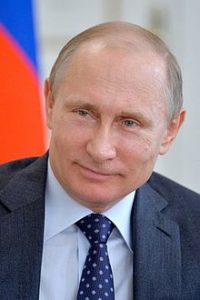NEW YORK (Press Release) — Misinformation campaigns through social media and other avenues are a lesser known, yet central aspect of the ongoing war between Russia and Ukraine, reveals Dr. Yaniv Levitan, an expert in psychological and information warfare at University of Haifa.

“The Russian invasion was accompanied by a huge ‘noise’ of TikTok videos designed to sow demoralization among the Ukrainians,” Levitan says. “Along with genuine videos of the Russian army’s progress, there were videos ‘borrowed’ from other armies and even Star Wars movies. The message promoted here was that the invading Russian army is huge.”
According to Levitan, the Russia-Ukraine conflict highlights how information warfare is an integral component of the contemporary landscape of warfare, alongside traditional combat. “This is part of the Cold War 2.0 paradigm,” he says. “Both sides show that they can make significant moves that are directed towards the other side, the local population, or people around the world who are watching the events.”
Russian information warfare began weeks before the invasion itself, through a series of cyberattacks on various websites in Ukraine, Levitan explains. “At the same time, Russia has sown deliberate misinformation, with Vladimir Putin and spokesmen saying in official statements that they had no intention of invading Ukraine,” says Levitan. “The purpose of these measures was to sow fear and confusion among the Ukrainians. Even before the invasion, the Russians used social networks to show the size and strength of the Russian force through videos and posts on the networks of Russian soldiers found on the Ukrainian border.”
Then, a day before the invasion, Russia carried out a major assault on Ukrainian websites known as a distributed denial-of-service (DDoS) attack — a malicious attempt to disrupt the normal traffic of a targeted server, service, or network by overwhelming the target or its surrounding infrastructure with a flood of internet traffic. “Although such an attack is not considered technologically advanced, the depth and breadth of the Russian attack indicates sincerity and a high technological level,” Levitan says.
The final piece of Russia’s psychological and information warfare has been spreading rumors, such as a rumor that special units were being sent to Ukraine to assassinate President Volodymyr Zelensky, or that Zelensky had fled Ukraine.
Furthermore, the Ukrainian side has also learned to use information warfare tools. “From the beginning, Ukraine’s goal was to position itself as a ‘David’ to ‘Goliath,’” Levitan continued. “For instance, with the help of his cell phone, one fighter on the Ukrainian side uploaded videos that sparked Russian rumors and allegations that he had fled or that the Ukrainians were about to surrender.”
In addition, in order to maintain morale, Ukraine uses social networks to showcase its achievements during the war such as downing Russian planes, hitting tanks, and capturing Russian prisoners of war. The credibility of some prominent Ukrainian war stories is unclear, such as the story of soldiers on “Snake Island” who reportedly refused to surrender and were killed by Russian fire.
*
Preceding provided by University of Haifa